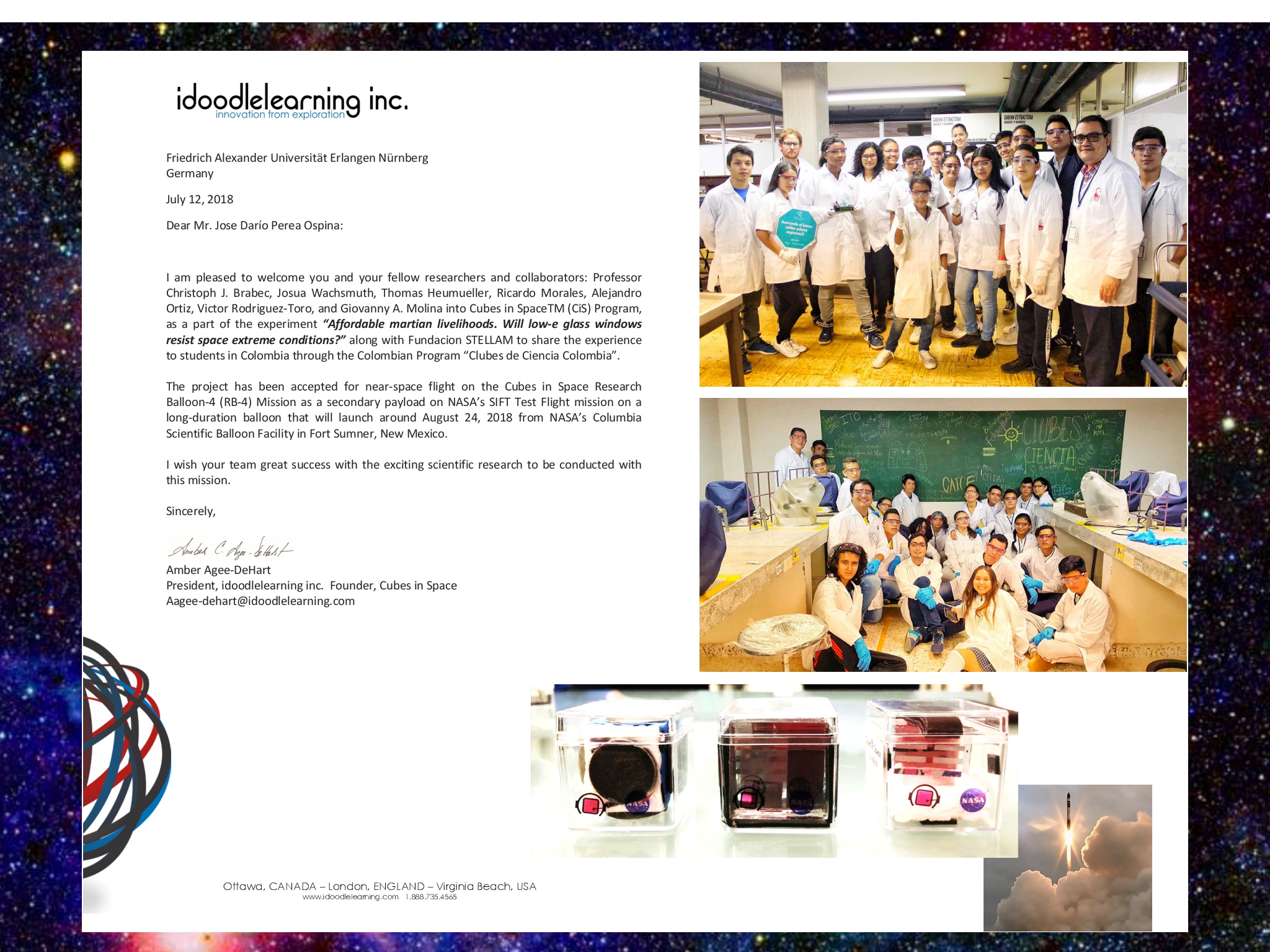i-MEET’s organic solar cells will end in the outer space
During the last decades, mostly inorganic photovoltaic (IPV) devices have been studied and used for applications in solar energy research on Earth and in space. Due to their physical and chemical properties such as high flexibility, low weight, large-scale and easy production, organic solar cells (OSCs) represent one of the novel branches of photovoltaic (PV) technologies with disruptive potential in Earth and space applications.
Upon Jose’s initiative to support a social-scientific project developed in Colombia with selected children and teens from public schools, himself, Josua and Thomas developed a non-expensive and complete educational model for the fabrication of the Organic Solar Cells or OSCs (made in Colombia) which was very well received by Colombian kids. Most excitingly, that activity became that popular that it will be followed up by a project launching these OSCs to the stratospheric layer of the Earth. The project was a product of the combination of two programs:
(1) Clubes de Ciencias Cali-Caicedonia (Colombia) ‘Acercando el Futuro: Celdas Solares Organicas’ within the scientific initiative “Clubes de Ciencia Colombia”; and
(2) Cubes in SpaceTM (CiS) Program, as a part of the experiment “Affordable martian livelihoods. Will low-e glass windows resist space extreme conditions?” along with Foundation STELLAM.
We hope that this successful experience of OSCs made in Colombia and sent to the space can inspire these young students and others to become a new generation of scientists and engineers that will support and develop not only research of clean energies on Earth, but also solar electricity in the outer space.

